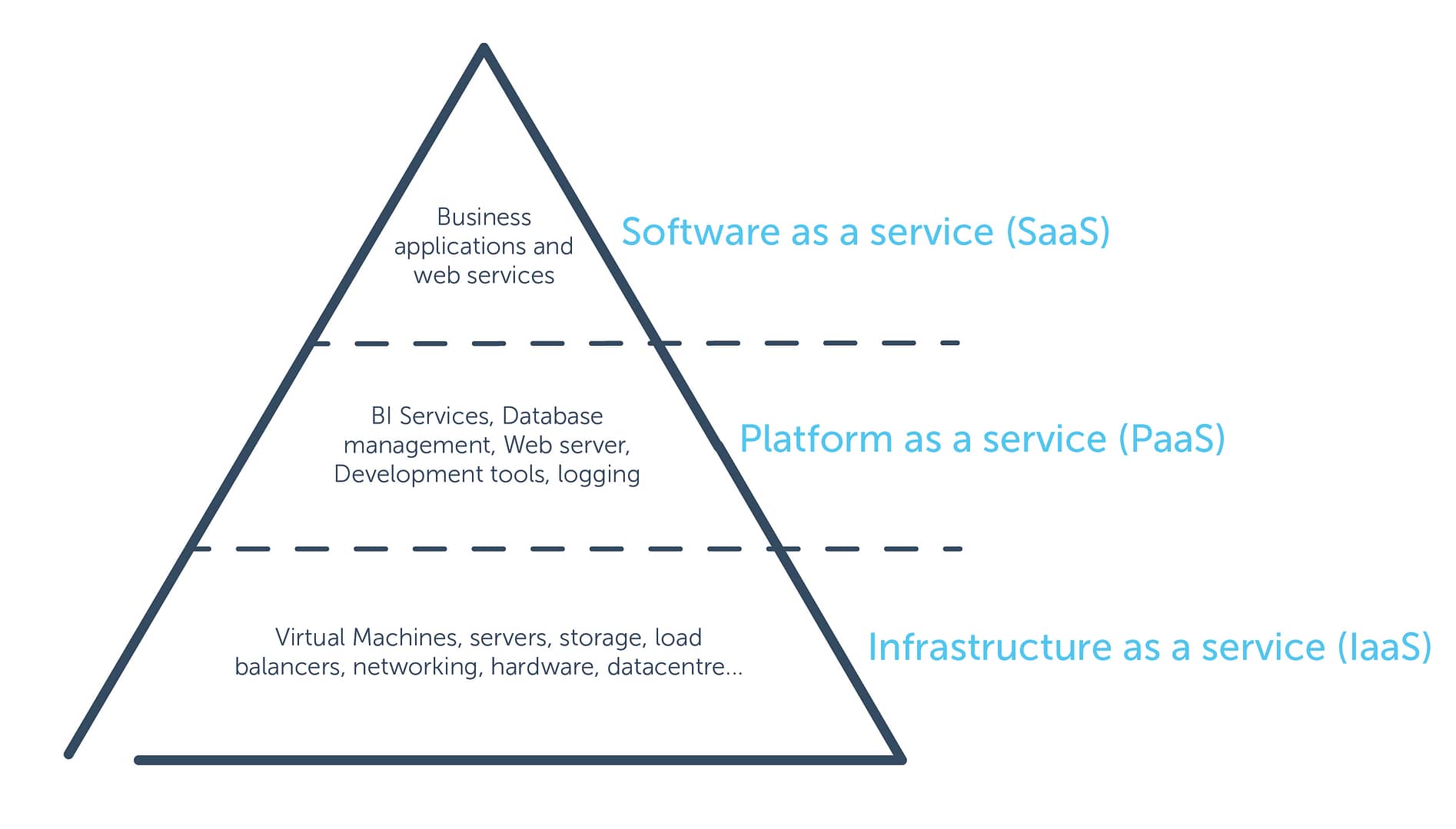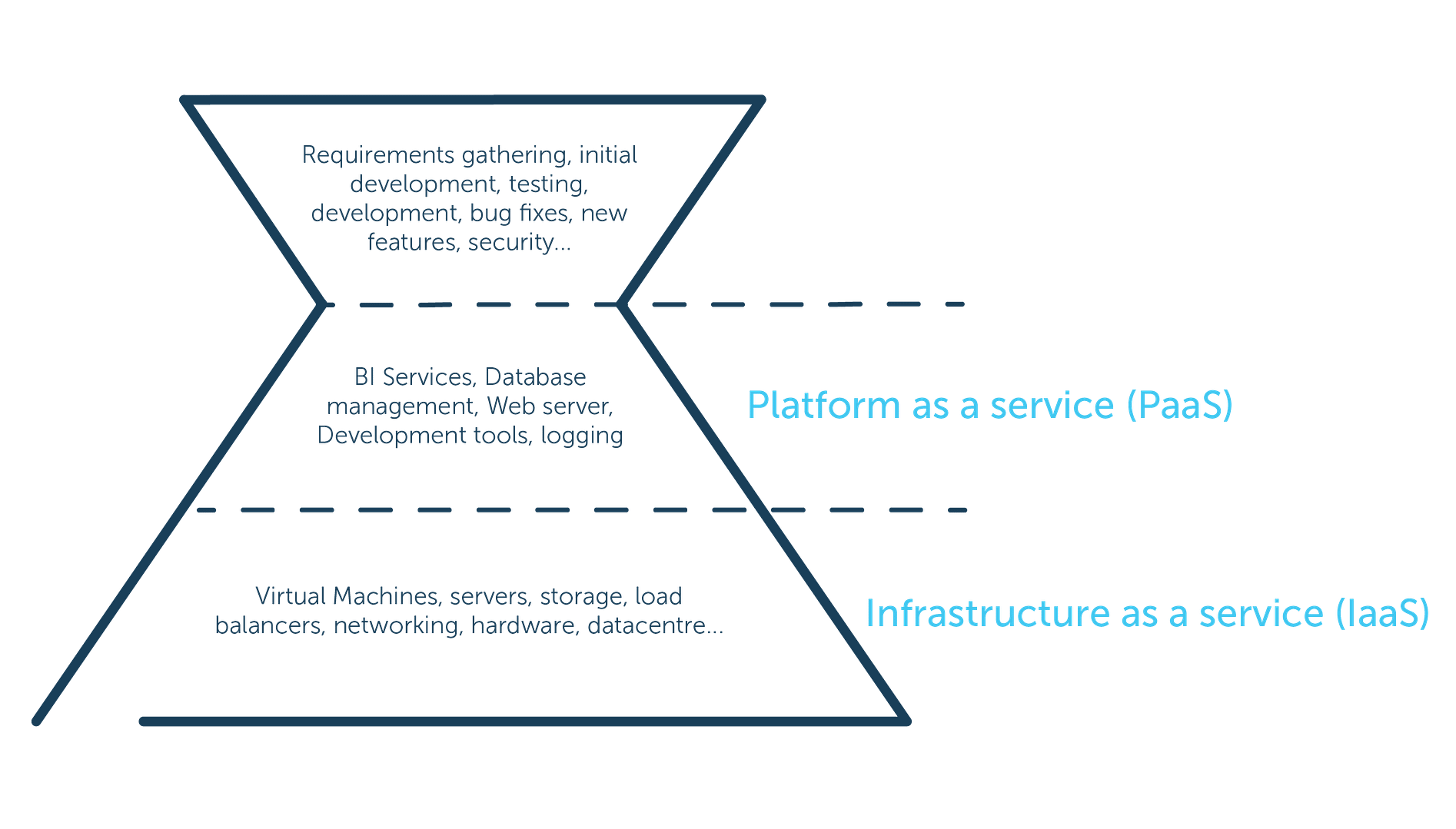Here at Cemplicity we run a SaaS platform.
But every now and then we’re asked about PaaS. So what’s the difference?
What we consider ‘the cloud’ these days can be broken into several layers. At the bottom level, there’s the Infrastructure. This includes virtual machines, networks, servers, storage units, and even the physical data centres themselves.
One layer above that is the Platform. This includes the operating systems your software runs on, along with any databases, and background services. Development tools are often categorised as part of the platform layer as well.
And sitting on top of that giant pyramid are the applications. These are the websites and apps you log into because you’ve got something to do. This is where Gmail lives, along with Xero, Netflix, and Cemplicity.

The platform layer is relatively generic and flexible. In theory you can build just about any software with the tools available in the platform layer.
It’s up at the application level where things get specific. Even though the platforms they are built on might be similar, Cemplicity and Xero are solving very different problems.
SaaS is a software delivery model, often built on top of cloud platform services. The SaaS model has plenty of advantages:
- It’s far cheaper to buy or rent software than building it yourself.
- It’s easy to get started: in many cases you don’t need to do much more than sign up.
- You don’t need to worry about server upgrades, security patches or backups. The SaaS provider handles everything for you.
Some of us are old enough to remember when organisations needed staff to maintain all those layers in-house. That’s a lot of people, and a lot of technology, but quite a lot of what those people did with that technology was similar across all organisations. It did not matter if you were an accountant or a surgeon – servers were gonna serve and databases were gonna database. The top slice of the pyramid was the only point where things differed. This is where the software written just for you, or some expensive third-party product would sit.
A SaaS solution will make sure the underlying platform keeps running. A SaaS provider is laser-focused on providing a few key services. The services provided by one SaaS provider might only be needed by a small number of customers in a local area. But at a global scale, any niche is massive. In our case, we’re passionate about creating better outcomes for patients. Because we’re talking to people all over the world who are just as passionate, we’ve learned a huge amount and we’ve already baked what we’ve learned into the Cemplicity platform. There’s a good chance that we’ve solved problems you don’t even know you’re going to have yet.
But what if you have got requirements for which a SaaS solution isn’t currently available? Or what if the solutions available don’t quite match your requirements? Couldn’t you build your own solution on a PaaS platform?
You absolutely could. But then the pyramid above no longer applies. It takes a long time to build any new bespoke software system. And once you’re done… well, you’re never done. Your business processes will change over time. Someone’s always going to be asking for just one more feature. And no matter how thorough your testing, there will always be bugs that need to be fixed.
The cost of maintaining any software over its lifetime is significantly greater than the cost of building it in the first place – and that price was already high. As a SaaS provider, we solve similar problems for many clients. If you’ve developed something in-house only your organisation will be affected by problems – but only you can resolve them. If you opted to build your own solution you would still get all the advantages of building on a PaaS platform and you’ll have a solution that precisely matches your requirements. But you will find yourself spending a lot more time and money to get there.

PaaS is great. But if you would prefer to spend more time delivering meaningful outcomes to your patients and customers rather than managing networks and backups, if you would prefer to spend your time thinking about how to grow your business rather than worrying about software upgrades?
In that case SaaS beats PaaS every time.

